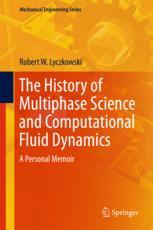

Most ebook files are in PDF format, so you can easily read them using various software such as Foxit Reader or directly on the Google Chrome browser.
Some ebook files are released by publishers in other formats such as .awz, .mobi, .epub, .fb2, etc. You may need to install specific software to read these formats on mobile/PC, such as Calibre.
Please read the tutorial at this link: https://ebookbell.com/faq
We offer FREE conversion to the popular formats you request; however, this may take some time. Therefore, right after payment, please email us, and we will try to provide the service as quickly as possible.
For some exceptional file formats or broken links (if any), please refrain from opening any disputes. Instead, email us first, and we will try to assist within a maximum of 6 hours.
EbookBell Team

4.4
82 reviewsThis book tells the story of how the science of computational multiphase flow began in an effort to better analyze hypothetical light water power reactor accidents, including the “loss of coolant” accident. Written in the style of a memoir by an author with 40 years’ engineering research experience in computer modeling of fluidized beds and slurries, multiphase computational fluid dynamics, and multiphase flow, most recently at Argonne National Laboratory, the book traces how this new science developed during this time into RELAP5 and other computer programs to encompass realistic descriptions of phenomena ranging from fluidized beds for energy and chemicals production, slurry transport, pyroclastic flow from volcanoes, hemodynamics of blood-borne cells, and flow of granular particulates. Such descriptions are not possible using the classical single-phase Navier-Stokes equations. Whereas many books on computational techniques and computational fluid dynamics have appeared, they do not trace the historical development of the science in any detail, and none touch on the beginnings of multiphase science. A robust, process-rich account of technologic evolution, the book is ideal for students and practitioners of mechanical, chemical, nuclear engineering, and the history of science and technology.